After loading when I start my amana washer it normally starts to fill with water. But suddenly at mid-cycle, it stopped. I’m so frustrated with what’s going wrong!
Don’t worry if your Amana washer starts to fill then stops. In many cases, the issue can be caused by one of two common culprits: a malfunctioning water inlet valve or a problematic main control board.
There could be other reasons that we’ve covered in this article with their basic and advanced solutions.
So, grab your toolset, and let’s get to the bottom of this.
Why Amana washer starts to fill then stops

When you start a cycle, the washer fills with water to the desired level before moving on to other stages like agitating, spinning, and draining.
But, If your washer is acting up by stopping during the filling stage, you should know there could be several reasons behind it.
Water supply issues, faulty water inlet valves, pressure switches, faulty lid switches, or malfunctioning control boards may cause this issue.
Anyway, here we’ll explore these reasons with their basic and advanced troubleshooting steps.
Amana washer starts to fill then stops: basic troubleshooting
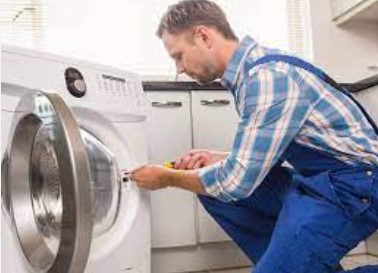
When your Amana washer starts to fill but at mid-cycle it stops, you should start with some basic checking. Let’s see if it may fix your issues or not:
Step 1. Check incoming Power Supply

First things first, ensure your washer is properly plugged in and there are no issues with the power source.
Sometimes, a loose connection can interrupt the cycle.
Step 2. Check the Water Supply
let’s rule out the simplest problem: the water supply. Sometimes, your washer may stop because it’s not getting enough water.
Check Water Valves
Inspect the water supply valves connected to your washing machine. Are they fully open?
If not, turn them counterclockwise to open them fully. Sometimes, valves get partially closed accidentally.
Clean Water Inlet Filters

Sediment can accumulate in the water inlet filters, restricting the flow of water.
Disconnect the hoses from the back of the washer and check the filters. Clean or replace them if they are clogged.
Step 3. Examine the Drain Hose

If your washer isn’t draining properly, it can cause the machine to stop mid-cycle.
Drain Hose Position:
- Ensure the drain hose isn’t inserted too far into the standpipe or too low.
- It should be positioned correctly to allow for proper drainage. A kink in the hose can also impede water flow.
Check for Clogs
- Inspect the drain hose for clogs or obstructions. Remove any debris if found. A clogged hose can prevent proper water drainage.
Step 3. Inspect the Lid Switch(Top load)
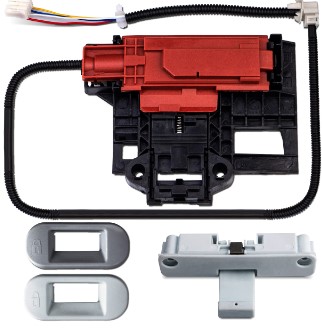
The lid switch is a safety feature that prevents the washer from running with the lid open. If the switch is faulty or not engaging properly, it can cause your Amana washer to stop filling.
Lid Alignment
Ensure the washer lid is aligned correctly with the switch. Sometimes, the lid may not be making proper contact, causing the washer to stop.
Test the Lid Switch
To check if the lid switch is functioning correctly, open and close the lid while the washer is running.
If you hear a distinct click, the switch is likely working. If not, you may need to replace the lid switch.
Amana washer stops mid cycle: advanced solution to try

If the above basic troubleshooting can’t fix your problem and it still starts to fill and stops mid-cycle, go try the advanced troubleshooting steps:
Step 1. Check the Pressure Switch
The pressure switch, also known as the water level switch, controls the water level in your washer. If it’s malfunctioning, your washer may stop filling.
Access the Pressure Switch
Depending on your washer model, you may need to remove the control panel or cabinet to access the pressure switch.
Test the Pressure Switch
- With the washer unplugged, disconnect the hose from the pressure switch and blow gently into it.
- You should hear a clicking sound as you blow. If you don’t, the pressure switch may be faulty and needs replacement.
Step 2. Investigate the Water Inlet Valve
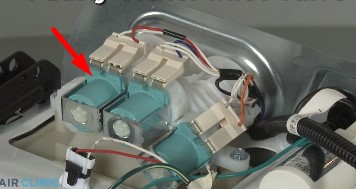
The water inlet valve controls the flow of water into the washing machine. If it’s malfunctioning, it can lead to your washer starting to fill and then stopping at mid-cycle.
Access the Water Inlet Valve
Turn off the water supply and unplug the washer. Remove the hoses from the back of the washer to access the water inlet valve.
Test the Valve
Use a multimeter to check for continuity in the valve’s solenoids. If there’s no continuity, the valve may need replacement.
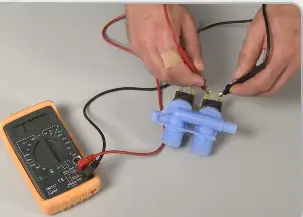
Step 3: Examine the main Control Board
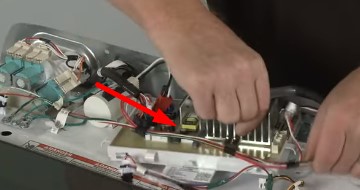
While a malfunctioning main control board is a less common cause of a mid-cycle stoppage, it’s worth considering, especially if the water inlet valve is confirmed to be working correctly.
The main control board is responsible for sending voltage to all the washer’s components, making it a central hub for its operation.
So, if all else seems fine, it’s time to check the control board. This is a more complex task and may require professional help.
Final step: Reset the Amana washer motor
Resetting the motor of your washer can sometimes help resolve issues with it starting to fill and then stopping.
However, it’s important to note that not all washers have a reset feature for their motors.
Unplug or Disconnect the washer and wait for a Few Minutes ideally 5-10 minutes. After waiting, plug the washer back in or reconnect it to the power source.
Final thought
It’s normal to encounter some issues with your Amana washer over time. If your Amana washer starts to fill then stops, the culprit could be as simple as a partially closed water valve or a clogged drain hose.
Even, it may require more extensive troubleshooting, such as checking the lid switch, pressure switch, water inlet valve, or control board.
Whatever the reasons, you can now troubleshoot these with our solutions outlined earlier.
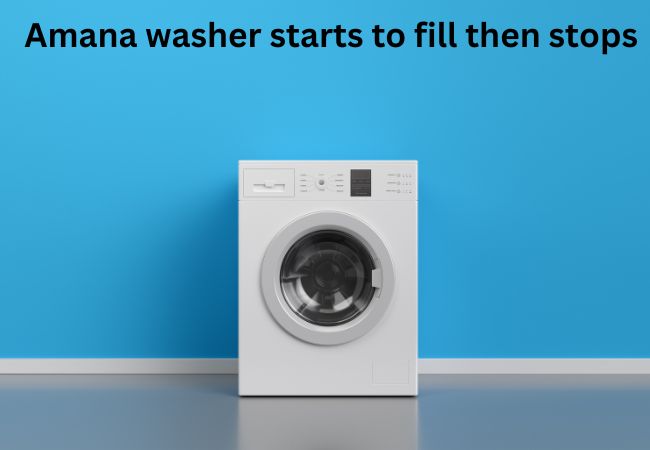
Leave a Reply